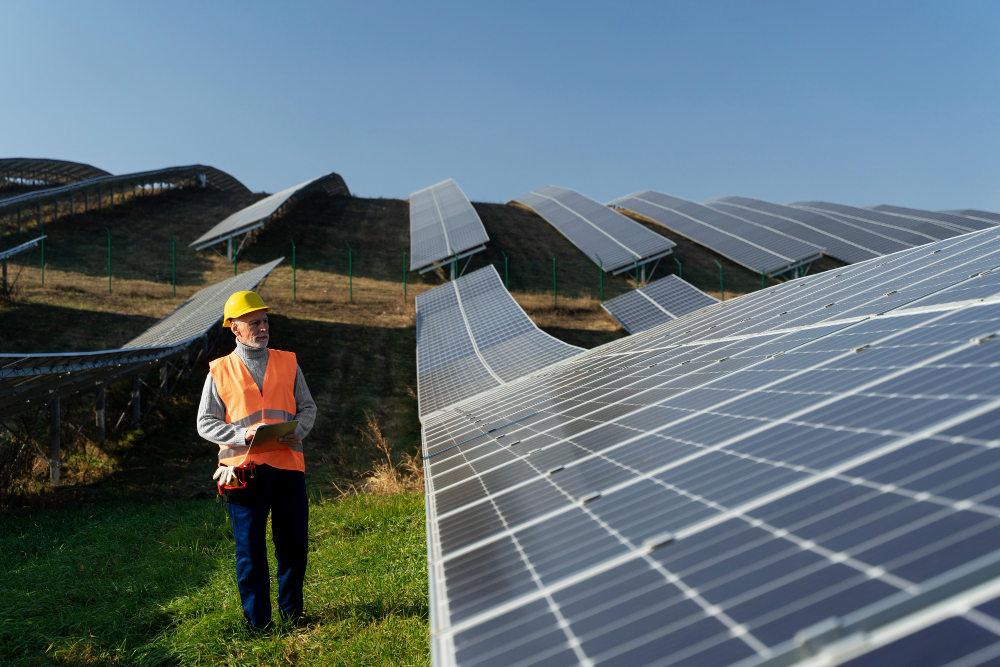In the short and medium terms, Europe’s survival will hinge on a rapid expansion of its defence capabilities. But an acceleration of international climate action is equally critical, in the face of the Trump administration’s withdrawal of the United States’s commitment to climate action and apparent withdrawal of its commitment to defending the free world. To avoid catastrophe, Europe must spend more – and more effectively – on defence and climate.
The world is currently on course for 2.6-3.1 degrees Celsius of global warming above pre-industrial levels by 2100, far above the 1.5°C of global warming that climate scientists deem to be the point beyond which climate change risks tipping earth into an irreversible hothouse climate. This is despite the surprising success of the 2015 Paris Agreement in generating emissions-reduction pledges in the form of nationally determined contributions (NDCs), revised every five years. The next instalment of NDCs, due this year, represents the last chance to limit global warming to close to 1.5°C. Unless NDCs are much more ambitious, the world will exhaust the remaining 1.5°C-consistent ‘carbon budget’ of 180 gigatonnes of CO2 before the next set of NDCs is due in 2030.
Carbon emissions are rising fastest in the developing world. Most developing countries cannot afford ambitious emissions reductions (or avoidance) without financial support from rich countries. Unfortunately, the new collective quantified goal on climate finance agreed at COP29 last year – aiming to provide at least $300 billion a year by 2035 – is not nearly ambitious enough to finance the required decarbonisation. The US withdrawal from international climate cooperation makes the task even harder.
It is still feasible, however. As we argue in a recent commentary in the journal Nature, written with Ottmar Edenhofer and Johan Rockström of the Potsdam Institute of Climate Impact Research, a climate finance coalition of the willing, comprising wealthy countries including EU member states, Canada, Japan, the UK and any other country that wishes to join, can and should offer sufficient fiscal support to any developing country (excluding China and rich Gulf states) that is willing to commit to a net-zero transition conditional on receiving adequate financial support (starting with a net-zero-consistent conditional NDC).
Most of the renewable energy development consistent with a net-zero development pathway will need to be financed by the private sector. But making this financing economically attractive will require both system-wide planning and a public subsidy in most developing countries. The fiscal costs of this subsidy for the climate finance coalition could be in the order of $124 billion per year from 2025 to 2035. This is a large number in absolute terms, but small (about 0.3%) in relation to the GDP of the climate finance coalition. It could be lowered further if complemented by revenues from new international levies, including on shipping or aviation (which would also reduce emissions directly). And it would be even lower in practice, as not all eligible developing countries would submit credible 1.5°C-aligned, conditional NDCs.
We have estimated that the net economic return of this investment to the climate finance coalition (in terms of avoided loss and damage) would be at least 9%, and could exceed several hundred percent, based on current estimates of the economic costs of carbon emissions (the ‘social cost of carbon’). The reason is simple: climate damage and adaptation costs are much higher than the $124 billion per year of fiscal costs for developed countries needed to prevent the harm.
Translating financing into successful decarbonisation will not be easy. It will require a credible governance structure, guiding system-wide financed implementation of phase-out and phase-in pipelines, embraced by both the climate finance coalition and developing countries offering net-zero consistent conditional NDCs. It will also require supportive regulatory measures, including carbon pricing.
EU countries have shown great willingness to raise defence spending. Among EU NATO members, the median increase since 2021 has been 0.7% of GDP. The need for further increases from the current average of about 2% to 3% of GDP or more per year is widely accepted. The reason is clear: higher defence funding is a matter of survival.
With global warming approaching tipping point, climate action in developing countries is equally a matter of survival for the EU and its allies. And at a cost of about 0.3% of GDP per year, it is a comparative bargain. The EU should announce that it is willing to offer ample financial support in exchange for ambitious NDCs, and the European Commission should push for a significant expansion of the fiscal resources dedicated to international climate action in its next multiyear budget proposal, due this summer.
These are first steps. But they are necessary, and COP30 will be the last chance to take them.
About the Authors
Patrick Bolton is Professor of Finance at Imperial College London and senior advisor to the Lazard Climate Center. He is a past President of the American Finance Association, a Fellow of the Econometric Society, the American Academy of Arts and Sciences, and a Corresponding Fellow of the British Academy.
Alissa M. Kleinnijenhuis is a Non-resident Fellow at Bruegel. She is a Visiting Assistant Professor of Finance at the Cornell SC Johnson College of Business at Cornell University and is affiliated with the Imperial College Business School Finance Department of Imperial College London. Dr. Kleinnijenhuis is Research Associate at the Institute for New Economic Thinking (INET) at the Oxford Martin School of the University of Oxford, a RPN Member of Sustainable Finance at the Centre for Economic Policy Research (CEPR), and a Faculty Fellow of the Cornell Atkinson Centre for Sustainability.
Jeromin Zettelmeyer has been Director of Bruegel since September 2022. He is a Research Fellow in the International Macroeconomics Programme of the Centre for Economic Policy Research (CEPR), and a member of the CEPR’s Research and Policy Network on European economic architecture, which he helped found. He is also a member of CESIfo.

